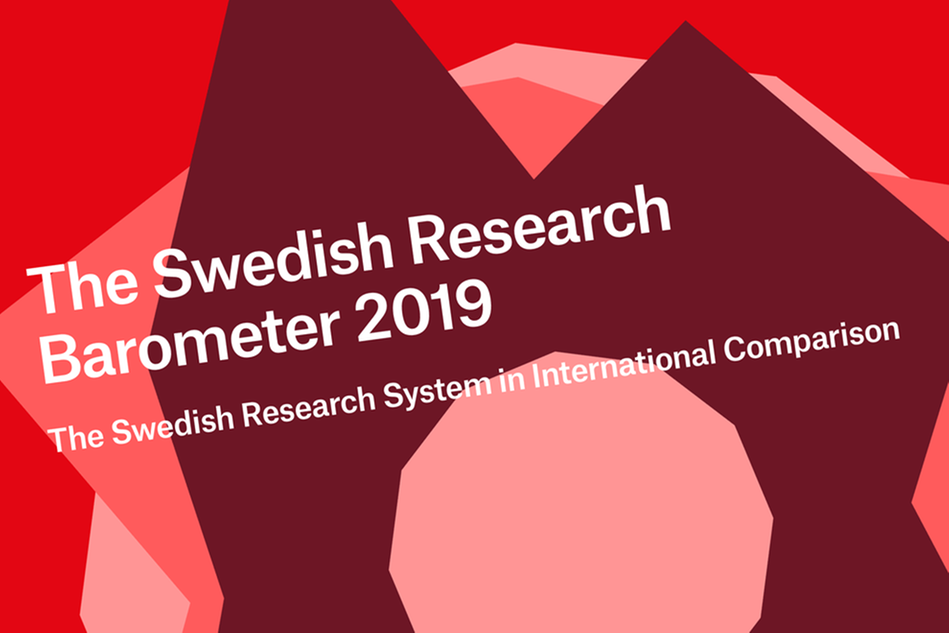Strong development of Halmstad University’s research
Halmstad University has high quality research. In the latest research barometer from the Swedish Research Council, Halmstad University ranks eighth nationwide – close to Chalmers University and Uppsala University, two institutions of higher education well known for their large quantity of research.
“The University’s development has been fantastic. I think that is because we have invested in the research and had systems that encourage better visibility and impact”, says Thorsteinn Rögnvaldsson, program director of Halmstad University’s Knowledge Foundation – Environment, Research for innovation.
“This is a very strong development, considerably stronger than the Swedish average.”
Thorsteinn Rögnvaldsson
When Halmstad University started in 1983, its only purpose was to educate. There was no stated mission to do research, and there were no direct research funds from the government. The management still invested in research, since they knew how important it is for the quality of a university. Today, Halmstad University receives direct research funds from the government and also several external research grants. The Knowledge Foundation has played an important role in the development towards a more research oriented university.
A frequently used indicator of research quality is the citation of a researcher’s papers, that is, being used as a reference in other researchers’ papers. Citations are, according to the Swedish Research Council, an important indicator of the quality, reliability and effect of the research. Every year, the Swedish Research Council calculates a bibliometric index* that applies to all Swedish universities. This bibliometric index is compared to the allocation of direct research funds to the universities. In this comparison, the development at Halmstad University has been very strong. Among the higher education institutions in Sweden, Halmstad University shows the second strongest development since the index was introduced for the year 2012.
More about the ranking
In the report Swedish universities are ranked by their ratio of highly cited publications. That is, how large a portion of the university’s publications are among the top ten percent of the world’s most cited publications, tied to the database Web of Science.

“We have improved our position in relation to the other Swedish universities by 150 percent since the government introduced the bibliometric index, which can be compared to, for example, Karolinska Institutet that has dropped 20 percent. But we are not only good at improving ourselves, we are also good in absolute numbers. Halmstad University comes in third place nationally when it comes to the ratio between our index value and the direct research funds we receive”, says Thorsteinn Rögnvaldsson.
According to the most recent research barometer conducted by the Swedish Research Council, Halmstad University ranks eighth nationwide in the fraction of top cited publications.
Long term oriented and clear goals
Halmstad University researchers mainly publish within the fields of computer science, health, business, medicine and psychology. In the fields of psychology and business the bibliometric indices for the University have increased almost tenfold during the past eight years.**
“This is a very strong development, considerably stronger than the Swedish average”, comments Thorsteinn Rögnvaldsson. When the ranking hysteria started in Sweden around 2005–2006, the Chamber of Commerce and Industry of Southern Sweden did an annual ranking of the universities in the south of Sweden. It commented then that Halmstad University’s “research productivity in the form of published articles is questionable”. It clearly did not consider our scientific production to be very good. To now be one of the top achieving universities in Sweden is a fantastic improvement.”

Thorsteinn Rögnvaldsson, program director of Halmstad University’s Knowledge Foundation – Environment, Research for innovation.
Thorsteinn Rögnvaldsson believes the positive evolvement of the research comes from a long-term strategy and clear goals. The University’s research evaluation ARC13*** contributed to highlighting weaknesses and areas for improvement.
The University’s three areas for research education
“15 years ago, the University started a process to identify areas in which the University should conduct research education. It started with the 2004–2008 University vision, which the University Governing Board decided on in the fall of 2003, and was managed mainly by our then Vice-Chancellor, Romulo Enmark.”
This led to three areas being selected in 2009: innovation science, information technology and health and lifestyle. These then became the foundation for the University’s Knowledge Foundation-Environment. It has been and still is an important developmental process that today involves more than 80 percent of the research done at the University.
Knowledge Foundation-Environment Research for innovation in short
Halmstad University is one of five universities in Sweden that has qualified to be a Knowledge Foundation-Environment. In a ten-year long agreement, which ends in 2021, the Knowledge foundation supports selected research efforts that gradually develop a more profiled and distinguished university of the highest quality, clear positioning and activities with great relevance to developing the business sector and the community. Halmstad University’s environment is called Research for Innovation.
“The research is broader at the University today than it was both 20 and 10 years ago, when it was more dominated by technology. The Knowledge Foundation-Environment at Halmstad University is the broadest topic-wise out of all the Knowledge Foundation-Environments in Sweden and the one that highlights a multidisciplinary perspective. The strongest development has been within the field of health and lifestyle. I believe that explains part of the success, the other Knowledge Foundation-environments focus more on technology.”
Teaching faculty with research education make better education
As part of the strategy, Halmstad University made it a priority to increase the number of employees with doctoral degrees and highlight the connection between research and education.
“When we created the areas for the research education, we considered the quantity of both education and research. That supports the long-term development and recruitment of academic teachers.”
The success has come about through small changes and industrious work, it is not a quick revolution.
“Now I think we have earned some time to reflect and enjoy our success. The challenge ahead is to take the next step and keep the strategic work up-to-date in all parts of the University. The work we are doing on the profile areas Health innovation and Smart cities and communities is an important part of this development.”
Text: Kristina Rörström
Illustration/photo: Swedish Research Council and Anders Andersson
* The Swedish Research Council’s annual bibliometric index was introduced by the government to redirect the annual research allocations based on the universities’ performance. These research allocations are direct funds and not exposed to competition every year – contrary to external grants that researchers apply for in competition, from funders such as Vinnova, Swedish Research Council etc.
** Within the field of psychology, the University’s bibliometric index has increased almost ten times during the past eight years. The same goes for business which has also increased tenfold. Within computer science the bibliometric index has doubled, which is in line with the national development.
*** ARC13 was an evaluation of all research at Halmstad University.
Read more
Swedish Research Barometer 2019 External link, opens in new window.

